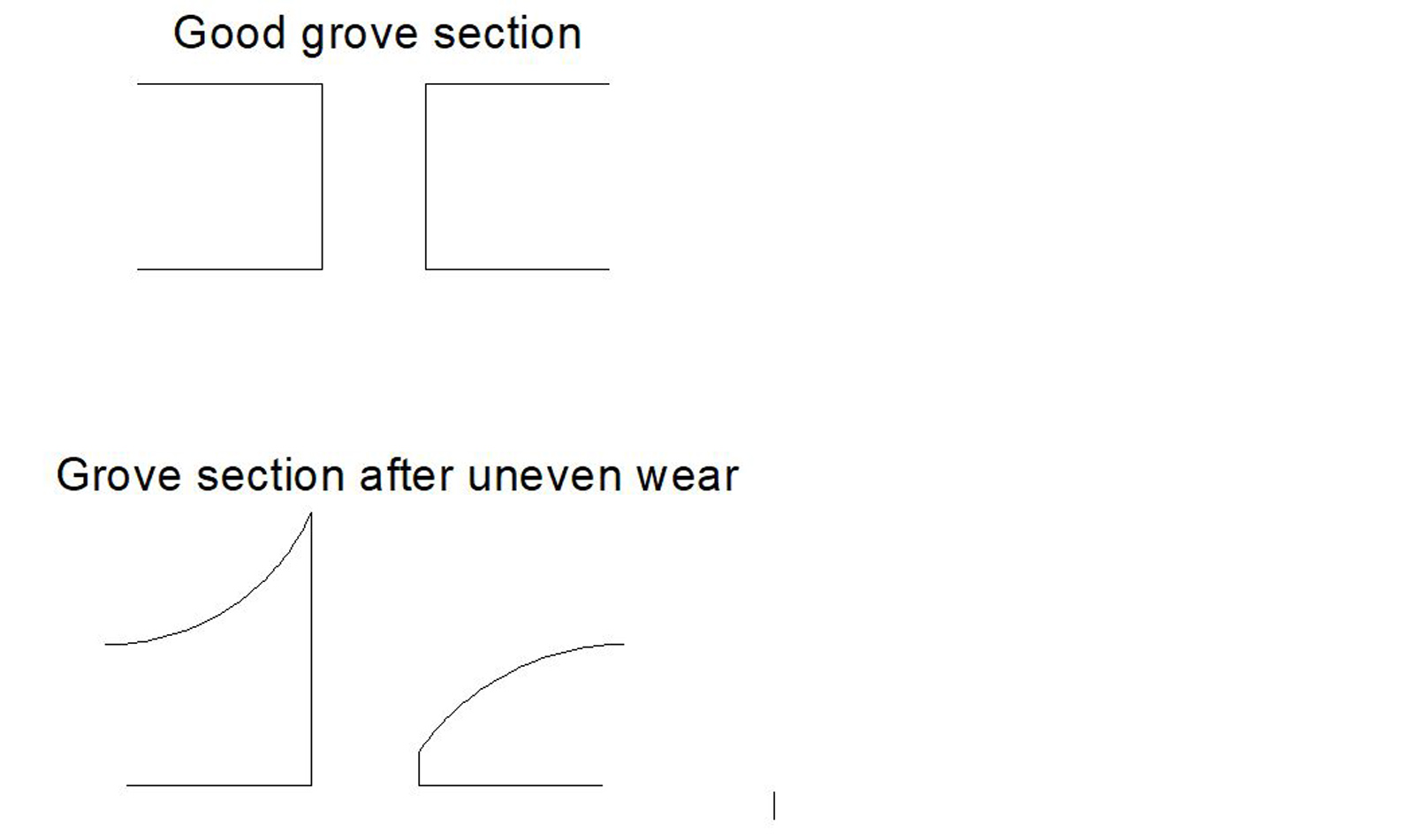We know, there’s no such thing as a stupid question. But there are some questions you might not want to ask your local shop or riding buddies. AASQ is our weekly series where we get to the bottom of your questions – serious or otherwise. Hit the link at the bottom of the post to submit your own question.
Welcome back to the Bikerumor Ask A Stupid Question series. Happy New Year, folks! This week, we take a look at how rubber compounds and tire pressure are affected by temperature – a timely topic as winter takes hold here in the Northern Hemisphere. We also have an unrelated bonus question on why motorcycle tread patterns contrast to that of mountain bike tires. Your experts are as follows:
- James Heaton, Marketing and Public Relations at WTB
- Robin Schaub, Product Engineer at Onza
- Ken Avery, SVP Product Development at Vittoria
- Robert Mennen, Product Manager at Schwalbe
- Samuele Bressan, Global Marketing Manager at Pirelli
Will sub-zero temperatures negate the grip benefits of running a soft compound MTB tire versus a harder compound version?
WTB: Generally, colder temperatures will mean colder rubber, and colder rubber means harder rubber. If you already have a hard compound tire to start with, then you can expect that compound to get a little harder as the temperature drops. A soft compound will also get harder when it gets colder, but it will still stay softer than the hard compound at the same temperature.
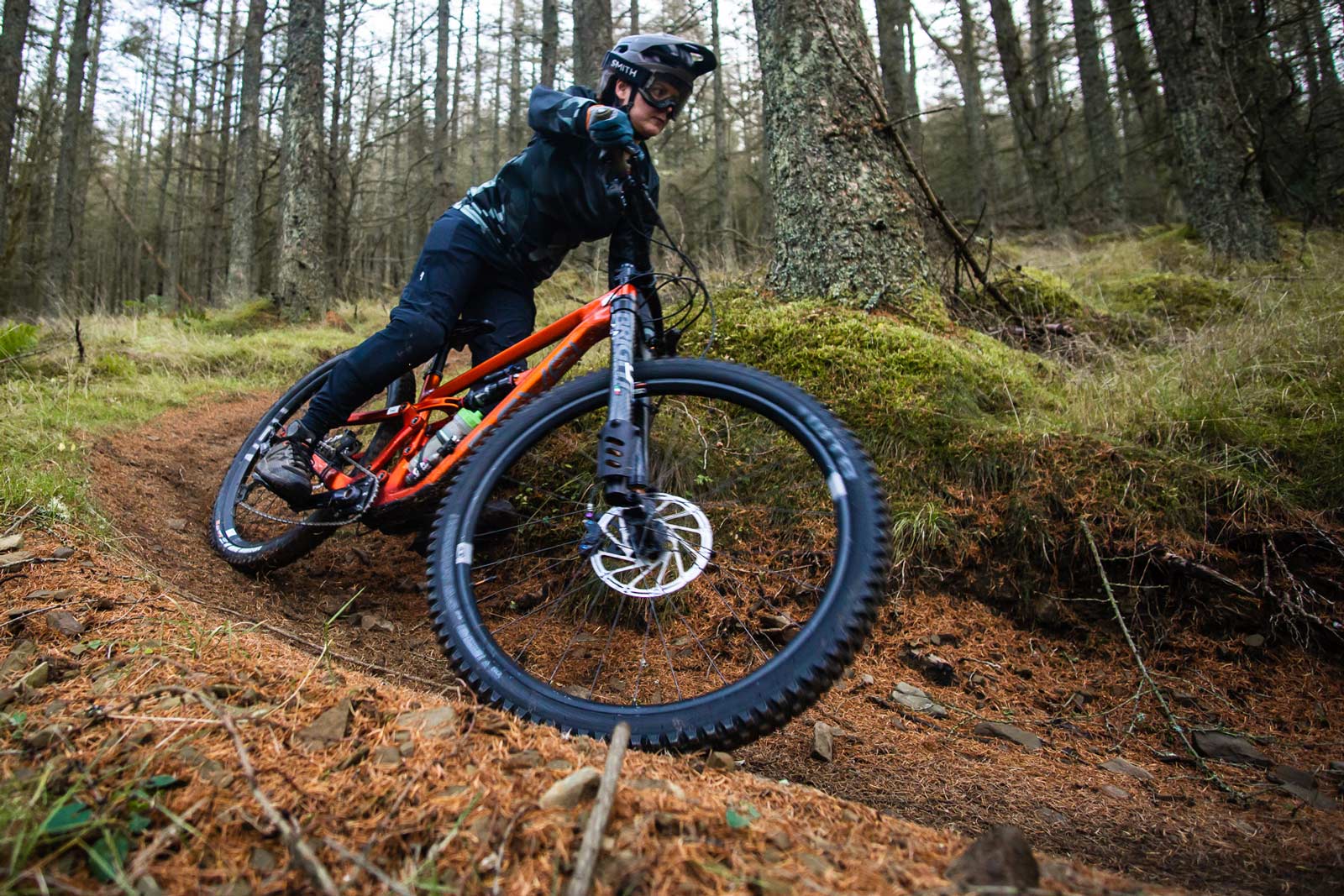
Basically, the softer compound is still the softer compound, regardless of temperature. Back to the original question then… We’d say the answer is nope. Sub-zero temps won’t negate the benefits of a soft compound vs a harder one.
Vittoria: When used in a normal temperature range, softer compounds allow the tire to conform to terrain and increase grip. However, when the temperature drops, most rubber compounds get slightly harder, reducing the effectiveness. This can be especially true of summer performance compounds, which tend to be actually more sensitive to colder temperatures when compared to more standard durometer compounds. In extreme cases, super soft compounds can actually become harder (and less grippy) in cold weather, compared to the standard compounds.
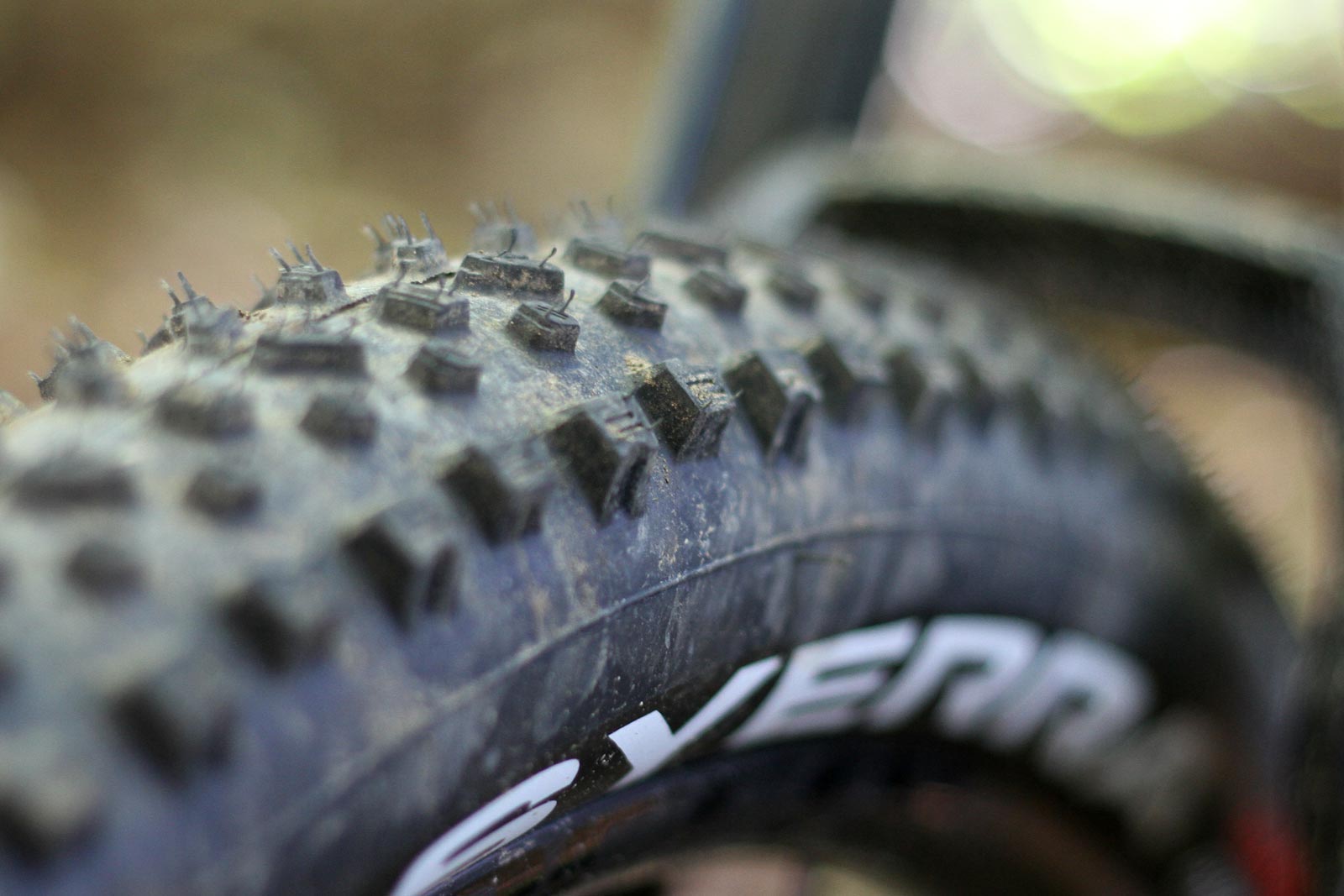
For example, we can look to the automotive industry, and studies done on stopping distances in cold weather environments. In these studies, winter specific compounds typically stop in a distance that is up to 50% shorter than summer compounds.
Schwalbe: While temperature definitely affects tire performance, there are some compounds like our Addix compounds that are less prone to this. For instance, the differences between our Addix Ultra Soft compound and Soft compound stay valid also for cold weather.

All of our Schwalbe Addix Compounds are rather insensitive to temperatures in usual conditions (from double-digit minus degrees to summer temperatures) and have a significantly lower glazing temperatures than some of our competitors. This is the reason why our tires work well under a wide range of conditions. Nevertheless, it is absolutely beneficial to run the Ultra Soft compound in these conditions as it’ll still provide a performance benefit in terms of grip and damping and thus safety in these conditions.
Onza: Most tires designed around natural rubber are affected by colder temperatures starting at around 7 °C, becoming less pliable and unable to mold to the surface as well. Synthetic rubber compounds have a higher tolerance and maintain much of their softness and traction across the surface but are still impacted by < 0 °C temperatures (just not as much as natural compounds).

By carefully fine-tuning our rubber compounds we are able to minimize the effect of low temperatures, however it’s impossible to completely get rid of the effects that come with temperature change. Generally, we recommend running a softer rubber tire in winter if you’re not already on one. Other options involve dropping a few bar/PSI or trying out a wider tire for an overall larger surface area to help the tire track better.
Pirelli: It really depends on the compound formulation: all the compounds have a characteristic curve of properties vs temperature. There is a temperature named Tg (Glass Temperature) below which compounds start behaving as glass. Around that temperature stiffness and hysteresis suddenly increase, making the compound lose performance and become extremely fragile. In Fig.1 you can see two different compounds (blue and red) and how stiffness (dashed line) and hysteresis (solid line) change around the Tg, which are in the peak of the solid lines.

Compounds are designed to work sufficiently on the right of the Tg (oval area), where properties are almost constant
It is true that, generally, the compounds become stiffer with lower temperatures, but, if they are designed with a very low Tg and a sufficiently wide temperature-usage-spectrum, these differences can barely be perceived.
Winter compounds have a lower Tg and the temperature-usage-spectrum is generally shifted toward colder temperature with respect to summer compounds (Fig.2, colors are not related to Fig.1).
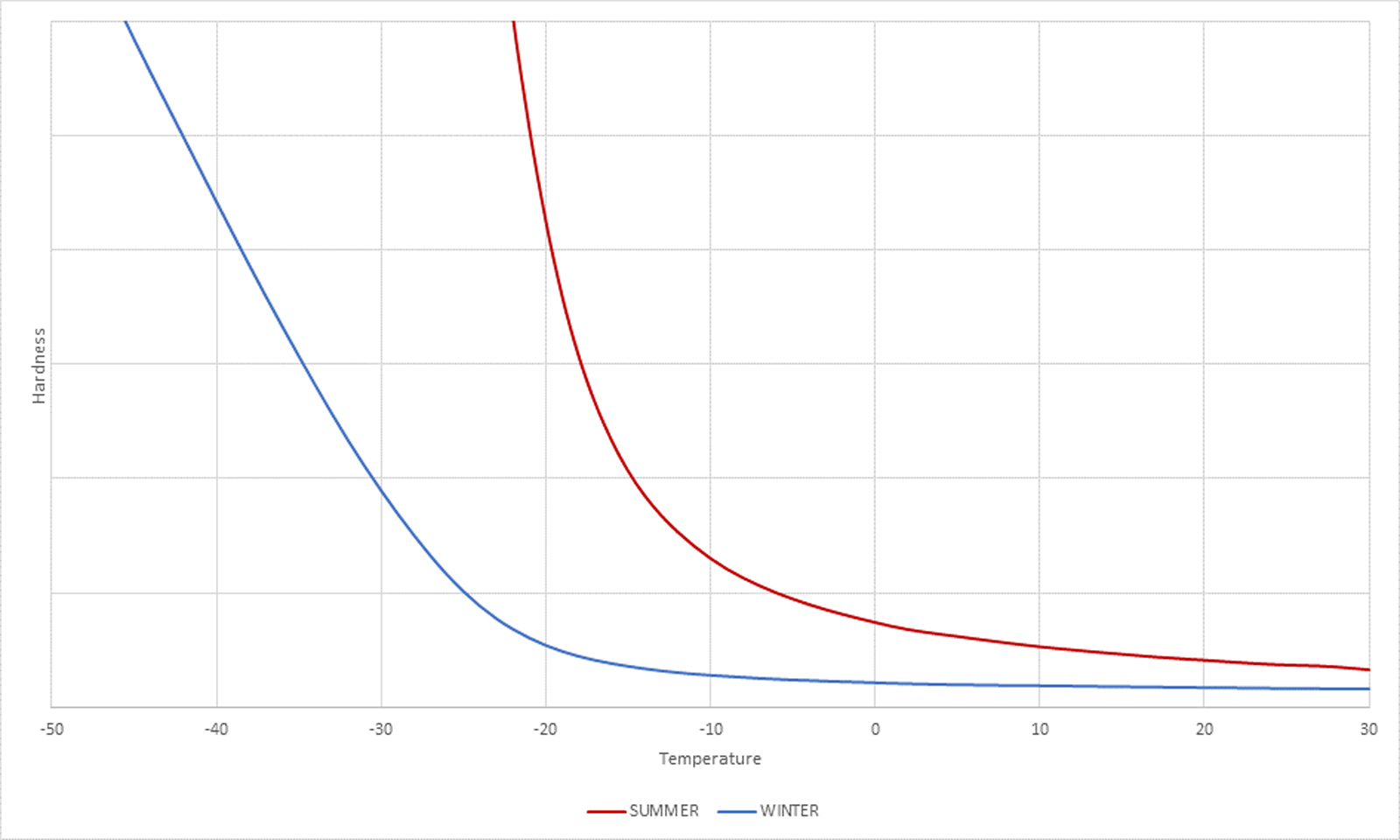
Of course, there might be a compromise, in fact, if a compound work on a too high temperature, it become softer and softer, causing a premature wear.
This to say that, negative effects on MTB compounds due to subzero temperature really depends on the compound formulations. It is true that a compound might become stiffer and rebound can become slower due to low temperature, but different compounds may be more subjected to this effects than others
How will the cold weather affect my tire pressures?
Onza: Typically, a tire will drop air pressure in colder temperatures (although the ratio does not align with the previous question on subzero temperature effects on rubber, so don’t count on these effects to cancel each other out). The rule of thumb is that per 10 °C, a tire will lose 1 PSI of pressure. This is not a significant adjustment, especially compared to an effect such as altitude changes on tire pressure, but it can still be noticeable and for riders sensitive about their tire pressure, this is something to keep in mind. We recommend checking your tire pressure before every ride.
Schwalbe: At constant volume, temperature and pressure are proportional to each other. A temperature drop of 20°C can lead to a tire pressure that is 0.1 – 0.2 bar lower for a tire in size 29 x 2.4”. When wetness is added a lower pressure can be beneficial: the speed in the wet is lower so there is reduced force transmitted into the tire which allows you to run lower pressure so you benefit from a greater contact patch for improved grip and better damping.

Vittoria: I get asked this question more than I would expect, so thanks for asking it for the article. I suppose you could say that the temperature will affect the pressure, but honestly, I always advise to check and adjust your pressure before each ride anyway, so the effect shouldn’t really be a huge concern, since you are adjusting it as needed.
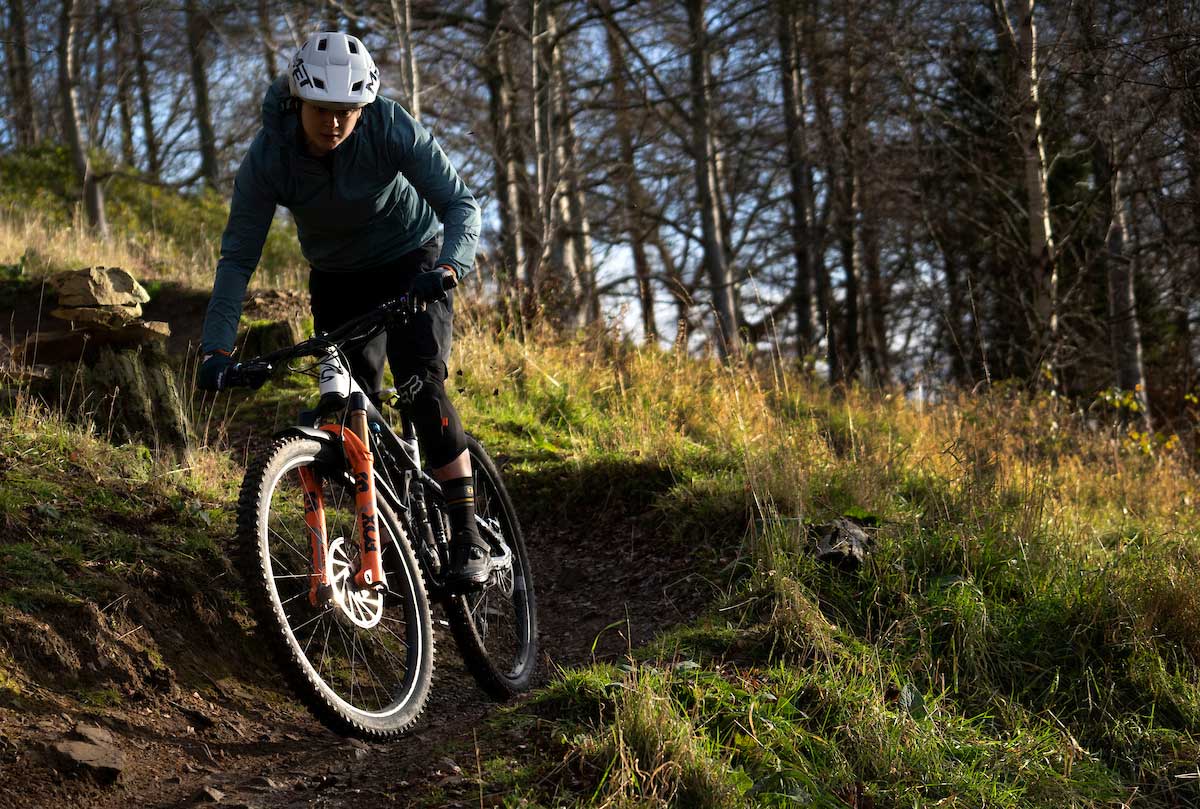
My personal take on this is, if the terrain is more slippery, then drop your pressure (to increase grip) until you find a new sweet spot. However, as mentioned above, the compound may limit this, so adjusting pressure (alone) will likely not give the same performance you were used to in the warm weather.
WTB: Cold air is more dense than hot air, so as the temperature drops you may want to slightly drop the pressure to get the same feel. In fact, you may even want to drop your pressure a little further if you’re struggling for traction. Colder temperatures can mean both harder rubber and more slippery terrain too, so dropping pressures a touch will help you keep traction.
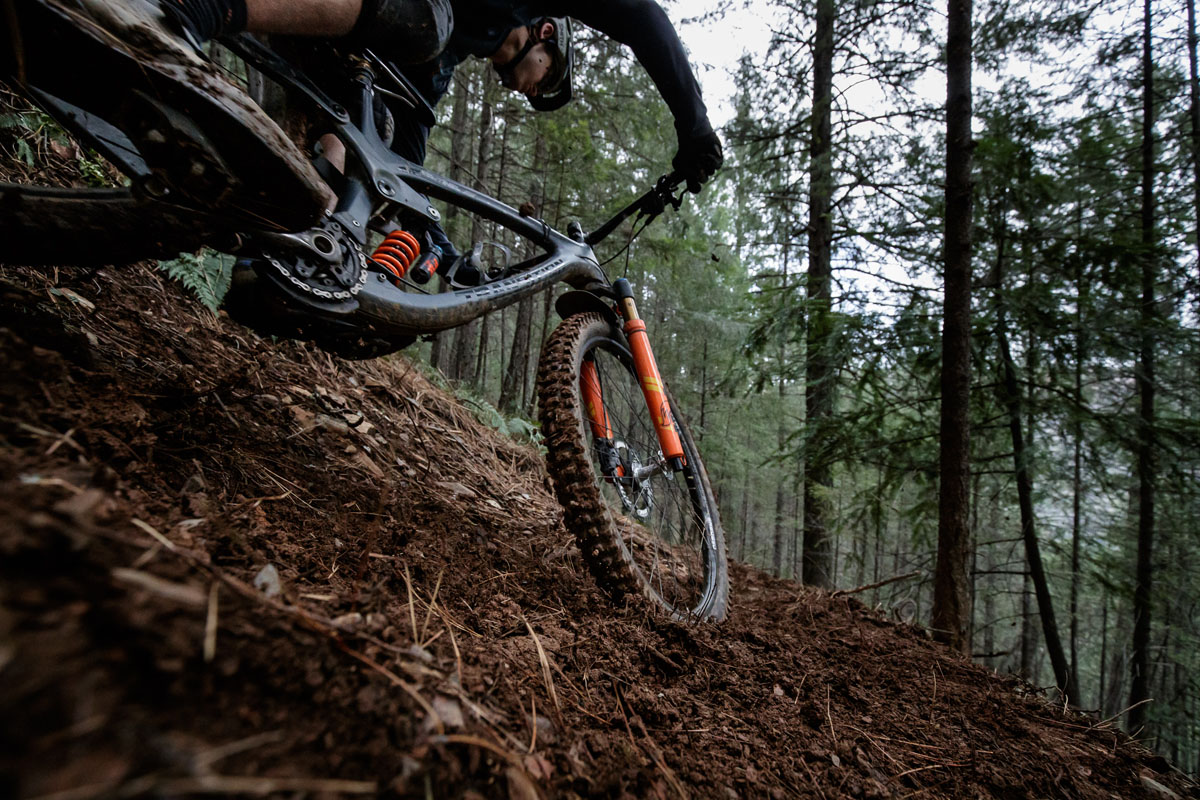
Pirelli: Usually, cold weather pushes the riders to choose lower pressures for different reasons:
• Generally, cold weather is related to slippery conditions. It is easier to bump into a shade area where the terrain is wet or even frozen, with a sudden reduction of grip
• With the tyres made of different compounds and materials, sometimes the properties discussed in question 1 make them a bit stiffer
• Usually in winter riders prefer to have more fun, be safer, even a bit slower, than in spring or summer
It is clear that a lower pressure improves grip and comfort, even if rolling resistance and quickness may be worse. Due to worse terrain conditions, speed is usually lower and, consequently, also the impacts with obstacles. Therefore, the risk of suffering a pinch flat due to the low pressure is reduced and a lower pressure is preferred. For the same reasons, the riders usually prefer higher knob tyres with softer but a slower rebound rubber compound for the cold season.
Why do Moto and Bicycle front tire chevrons point in opposite directions? The pointy end of the “V” points forward on bicycles and backwards on motorcycles.
Vittoria: Tread depth and knob spacing have a lot to do with this. The old chevron direction (to dig or to scoop) has long been a topic in tread design. On a bicycle, there is an emphasis on light weight, and low rolling resistance. In a super simplified sense, here is a brief overview:
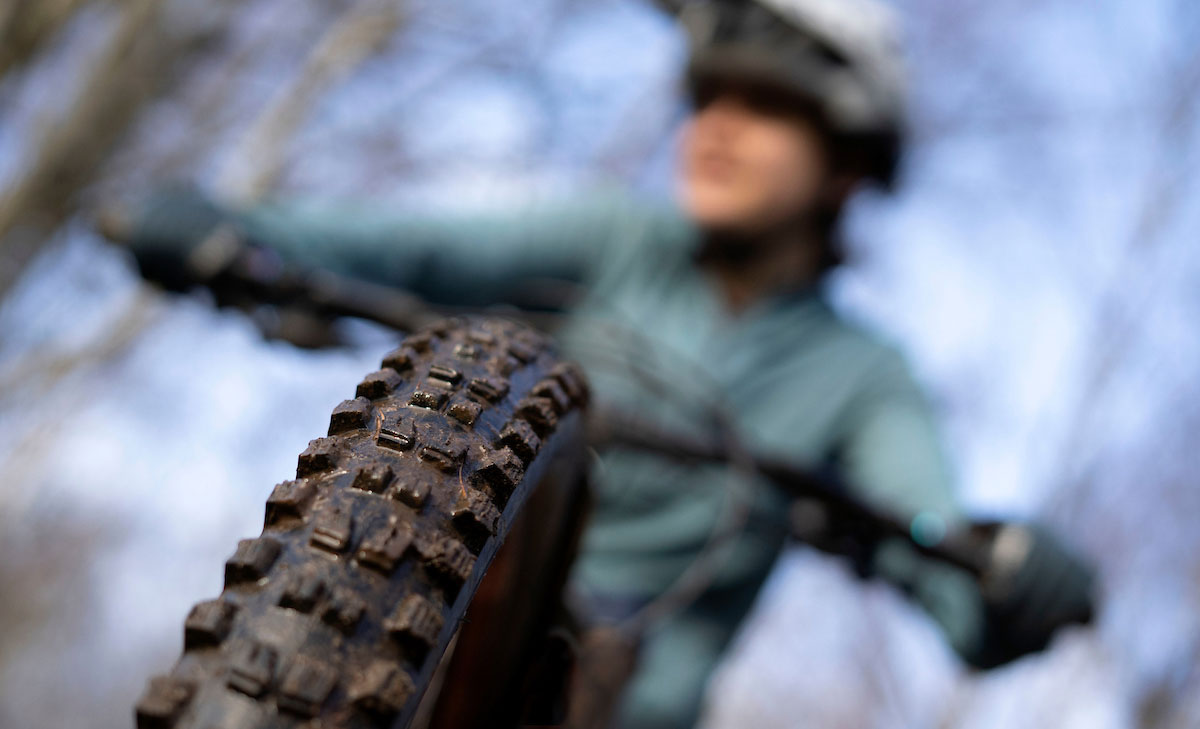
With the chevrons pointing forward, the knobs (or grooves) of the tire will form a row (or a little wall). This wall opposes the potential slip direction of the terrain during cornering. With a reverse chevron design, each knob (or groove) also is positioned to form a row or wall. However, this wall aligns with the potential slip direction, such that the effective edges of the knobs are situated one behind the next. Which is the right answer? As always, it will depend on the terrain, and application.
For example, on mountain bikes (used off-road), the forward pointing chevron is effective to dig into corners, and oppose under-steer. On road-going motorcycles, the reverse chevron is particularly useful in water dispersion on tarmac.
WTB: Actually, that’s not the case for WTB treads. The Nano is a ‘forward’ V, but the Vigilante is a ‘reverse’ V. How the tread looks is only a result of designing a tread for optimal performance, rather than something that is designed specifically. Tread design is always about making the tire perform well. If it looks pretty, then that’s a bonus.
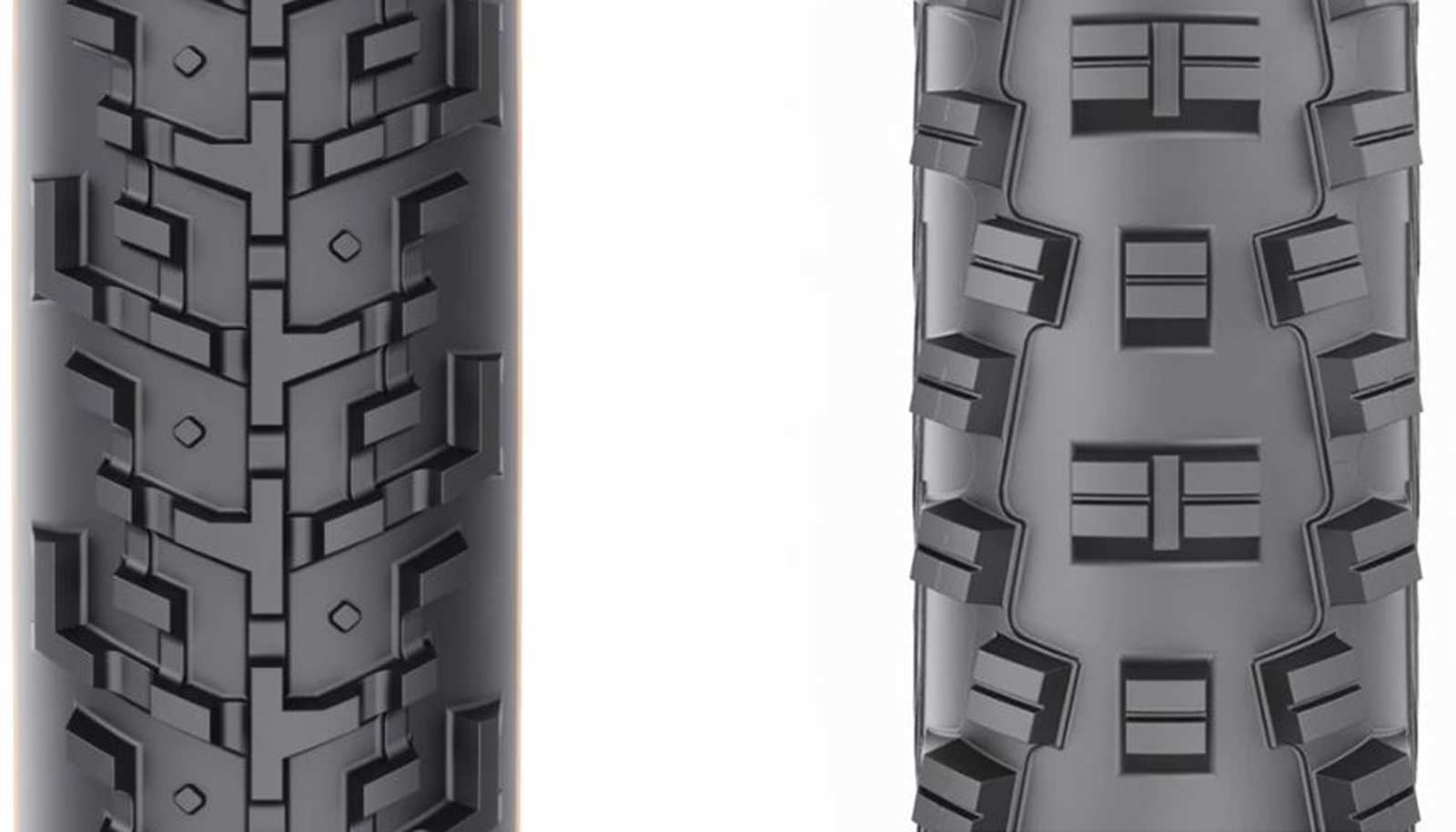
It’s worth noting though, that rolling resistance is not too large of a concern with moto tires as they have a big old engine pushing them forwards. On a bicycle you can directly feel the benefit of a tire that rolls quickly with every pedal stroke, so how fast a tire rolls is very important. Forward V designs generally roll faster than reverse V treads. Hope that answers you’re question!
Onza: This question can be re-framed to: why have directional tires in the first place, and what is their purpose?
Generally, for both bicycles and motorcycles, the rear tire is delivering the power to the ground, while the front tire performs most of the braking and takes all the steering forces. Motorcycles, just as bicycles, differ in their applications and are subject to varying terrain. The traditional v-grooves on a motorcycle street tire are not necessarily indicators of direction. Tire manufacturers design tires to work as a system for the front and rear.
Sticking with motorcycle street tires, the Vs face each other: the rear tire V faces forward (>>) to propel the motorcycle forward and hence twists in a way to “push” the tarmac behind while the front faces backward (<<) to propel water away from the tracking area and “push” the tarmac in front.
The V trajectory on a bicycle (especially for road tires) differs from that of a motorcycle in that the V tread-shapes face forward (>>) for both front and rear. This has mainly to do with rolling resistance, although tests show this only applies to mountain bike tires, where the tread is more prominent and impacts rolling performance more. Of course, on a bicycle, the rules are more open to interpretation as the forces front and rear are not nearly as powerful as on a motorcycle, but there are still very important differences in application and manufacturers have good reason for specifying direction, namely, to give the rider optimal performance in speed, traction, and durability.
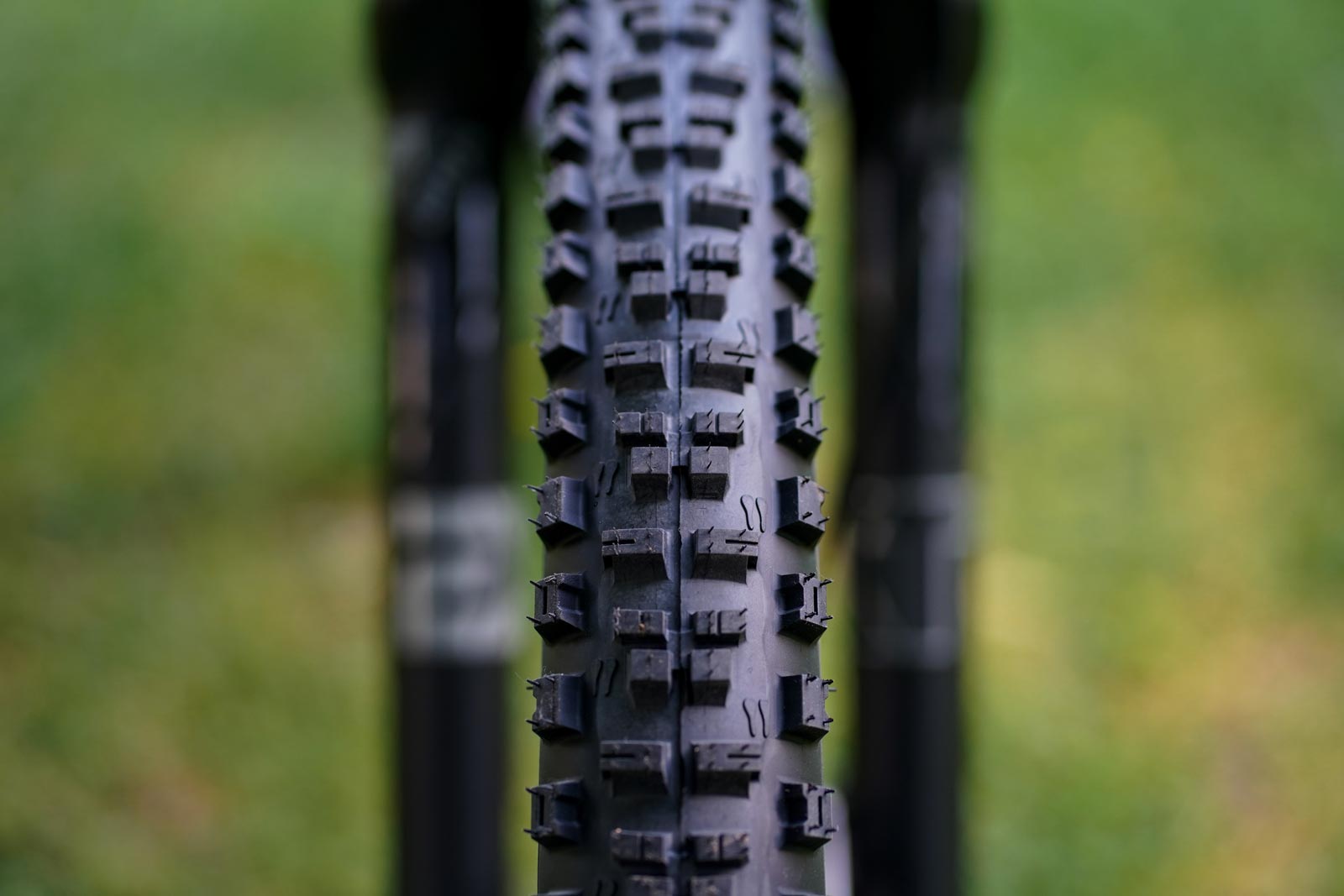
The so-called “sipes”, small grooves in the knobs of off-road tires, are arranged in the direction of the forces acting on the tire in the respective load case. In the case of the side knobs, these are forces from the side, while the center tread gets loaded in the direction of travel. By incorporating sipes in the tire design, we can influence how the tire deforms under load and ultimately increase grip and braking performance in the right areas.
In either case, for both bicycles and motorcycles, it is very important to mount a tire as specified by the rotational arrow, which is always marked on the tire’s side wall.
Schwalbe: For cars and motorcycles, for optimal water displacement to prevent aquaplaning, the “V” should point forwards, so that the top of the “V” hits the ground first and water can be displaced to the sides. As far as we know some Moto tire manufacturers changed the direction of the “V” because otherwise the tread can become some kind of saw-tooth profile with reduced durability.

Both cases are not really relevant for bicycle tires, especially MTB tires. So, when we design tread patterns we take into account the field of operation and concrete requirements for the profile. Our Schwalbe Magic Mary and Big Betty use side knobs that have a “V” pointing backwards. We found out that this design in connection with the general tread pattern of these two tires offers some benefits for controllability while cornering. For other tires, a different shape has proven to be advantageous, for example the Racing Ray or Racing Ralph. It depends on the overall tread pattern and must be adapted to it.
Pirelli: Grooves on tyres have different purposes, whether they are for bicycles or motorbikes or cars:
1. Evacuate water, especially motorbike road tyres. In the case of the bicycle, this is neglectable as bicycles tyres are not affected by aquaplaning. They are very narrow and speeds are lower than the ones which might cause aquaplaning with such a narrow footprint.
2. Give proper behavior to the footprint. A grove (or a sipe) make the compound behave in a “softer” way in that particular area due to deformation (which is a design parameter of the engineers when they define the desired performances and that is linked to the rubber’s mechanical properties too).
3. Mechanically grip the terrain, especially for all terrain tyres, supposed to be ridden in harsh conditions.
These are the general criteria. The factor that comes into play to differentiate the choices made by the designers between motorbike and bicycles is mainly the overall mass (so the weight) difference of the two vehicles, and so the resulting forces that effect the tyre’s behavior.
On a bicycle, forces are way lower than what we see on motorbikes, and wear occurs mainly on the rear wheel and on the center of the tread, due to traction. Wear is not an issue for lateral groves. Therefore, the usual choice is to go for the best mechanical grip in braking (point 3. of the above list). Furthermore, considering the smaller dimension of bicycle tyres with respect to motorbike tyres, the roughness of the asphalt or the dirt on the roads has a bigger impact on the grip and handling of the bike, making the choice of going for more mechanical grip (point 3 as said) the winning one.
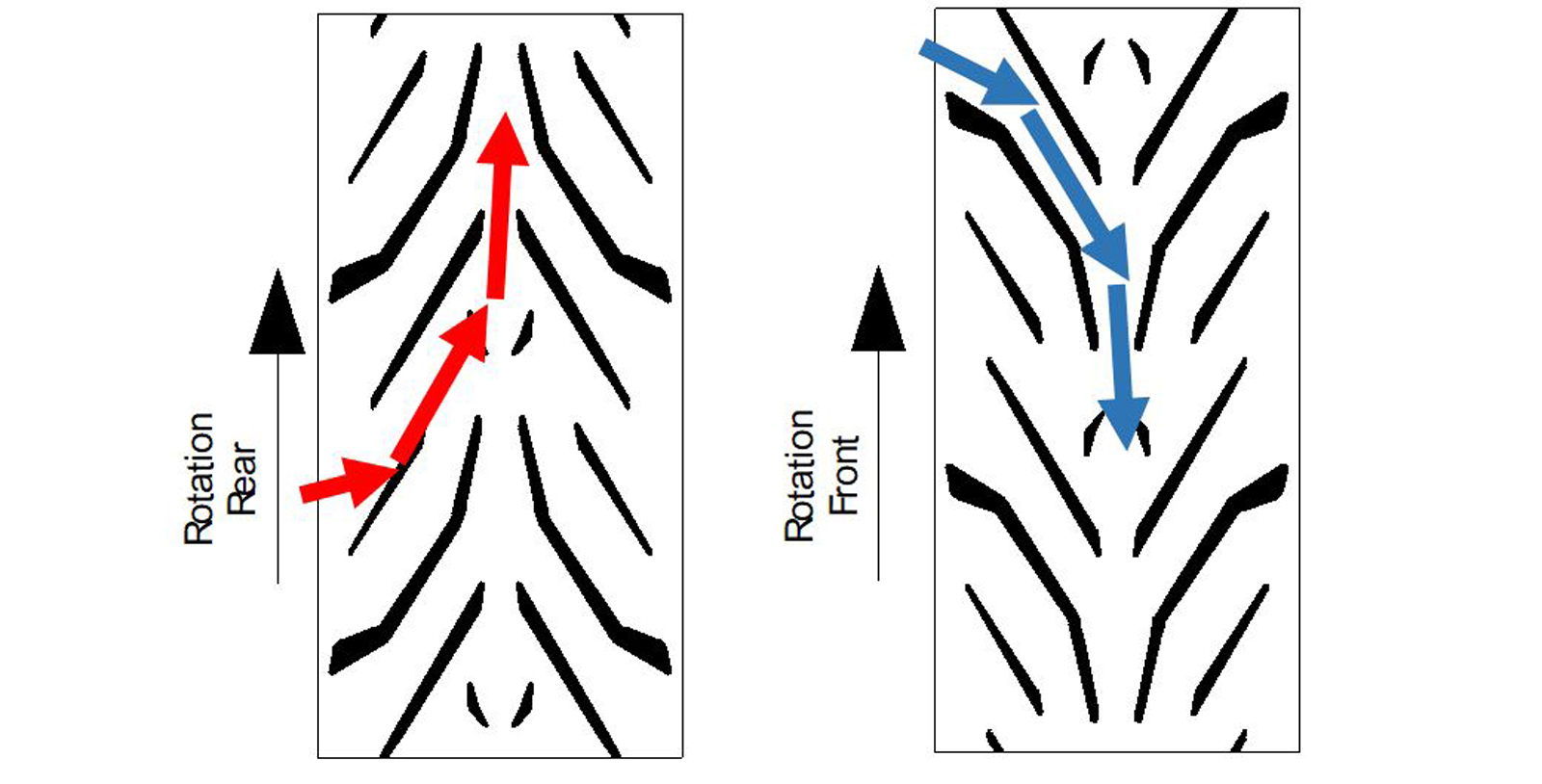 With respect to motorbikes, the tyres are subjected to much higher and different forces, especially when leaning:
With respect to motorbikes, the tyres are subjected to much higher and different forces, especially when leaning:
• FRONT: Braking + Leaning (blue arrows)
• REAR: Acceleration + Leaning (red arrows)
The magnitude of those forces that happen at the rear wheel (accelerating out of a turn, when still leaning, is quite common) and in the front (braking into the corner, so with high mass that puts pressure on the side tread) are way higher, and need to be addressed also mechanically. As a result, the average stress vectors follow the groves’ direction (in the above picture for the left side, it is symmetric on the right).
In the center, the vector is aligned with the tyre rotation, only traction or braking with the straight bike. Going towards the shoulder, the leaning component is higher and higher, resulting in a more radial stress. In fact, it is quite improbable to brake or full throttle in while leaning a lot.
If the rotation was opposite, the vectors would be perpendicular to the groves. This would enhance mechanical grip (point 3.). In fact some on/off road tyres have an apparently opposite rotation for the front tyre with respect to road ones.
However, these situations can lead to uneven grove wear, causing unpredictable and dangerous leaning behaviors.
Here’s a visual example of a cross-section of a groove that has edges uniform and even, and an example of what happens when the groove edges are charged perpendicularly (the case of a motorbike tyre mounted with the arrow pointing forward, as if it were a bicycle).
Got a question of your own? Click here to use the Ask A Stupid Question form to submit questions on any cycling-related topic of your choice, and we’ll get the experts to answer them for you!



